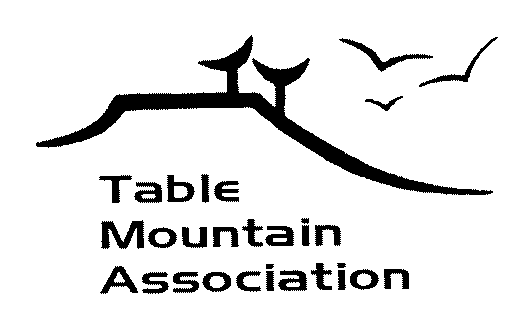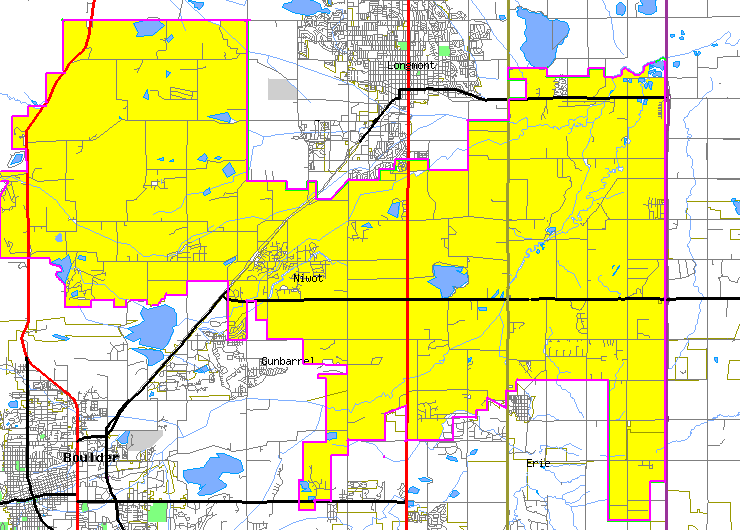
WATER, WATER, EVERYWHERE, AND THESE DROPS ARE MADE TO DRINK: THE LEFT HAND WATER DISTRICT
by Suzanne Webel
As recently as 40 years ago, the only domestic water supply for rural folks in our area included shallow wells, cisterns filled with water from their irrigation ditches, or tanker trucks. Many homes lacked running water, and everything from laundry to dishes to bodies were washed in basins using water hauled in or drawn by hand. But the major complaint seems to have been that the "bad water" corroded equipment and caused low milk production and poor weight gain in cows (Denver Post, 11/14/60).
In the fall of 1960, half a dozen visionary farmers decided they needed a more reliable source of water. After an exploratory meeting at the Left Hand Grange, a small group of landowners banded together to form the Left Hand Domestic Water Users Association. Members of the Association lived between Boulder and Longmont, from Foothills Highway on the west to Interstate Highway 25 on the east. At that time there were approximately 750 farm homes in the entire area (Longmont Times-Call, 8/27/60).
It was determined that the new water system would cost approximately $1.25 million, but Farmers Home administration (FHA) funding was capped at $250,000 per association. Consequently, the members decided to form five associations, each of which would apply for the maximum loan. Almost immediately, the FHA changed its loan limit to $1 million, and the five associations merged into a single new entity, the Left Hand Water Supply Company. The FHA required the company to gather a total of 650 members, and board members spent considerable amounts of time persuading residents of the advantages of hooking up to the new system. A $10.00 down payment was considered proof of interest; when the system was put into operation the inipial tap fee was $250.00.
When the "Water Company" was formed, it served members generally between Highway 36 and Highway 119 with Left Hand Creek water from a diversion point located on the western border of the service area. However, reliable water led to a population boom in the area. It soon became apparent that another source would have to be located. The Company began buying Colorado-Big Thompson (CBT) water to serve properties generally east of Highway 119.
In the early days, a means of direct use of the CBT water did not exist, inasmuch as the only treatment facility, the Spurgeon plant near Highway 36, was considerably uphill of the CBT Boulder Feeder Supply Canal. So a complex and mutually- beneficial exchange agreement was worked out in which the Left Hand Water Supply Company traded CBT water for Left Hand Ditch Company streamflow.
In 1990, the Left Hand Water Supply Company (a private firm) was dissolved by the members and replaced by the Left Hand Water District (a governmental entity), in order to take advantage of better interest rates, bond-issuing capability, and reduced insurance liability, among other advantages.
In the last 40 years the number of members served by Left Hand Water has grown from the original 650 to more than 6,000. Approximately 70% of the District is located in Boulder County, and the remaining 30% in Weld County. At one time, the District served about 90% of the agricultural land of Boulder County. The map the below which shows the approximate service area of the water district.

As of 2001 the District owned 2,745 shares of Left Hand Ditch stock, representing approximately 17% of the 16,800 outstanding shares in that company. The Water District also owns 6,270 units of the CBT project. Together these shares represent about 7,200 acre-feet of available untreated water. In contrast, in recent years, the typical water demand has been about 5,000 acre-feet. The balance of unused water is made available to the Left Hand Ditch Company for summer irrigation needs, in exchange for winter storage rights in the latter's reservoir system.
The District has two filtration plants, the Spurgeon plant near Foothills Highway and the newer Dodd plant near Niwot. Treatment capacity exceeds 12 million gallons of water/day. Water purification technologies that are used to produce our clean drinking water include: microstraining, coagulation, flocculation, sedimentation, filtration, chlorination, and pH adjustment. After treatment, the water flows by gravity and pumping through more than 215 miles of pipelines, ranging from 1 inch to 30 inches in diameter. The District now serves an area of more than 130 square miles. These days a new tap in the Left Hand service area costs $12,000 and one in the CBT service area goes for $23,000.
Quite an accomplishment for a handful of farmers, eh?